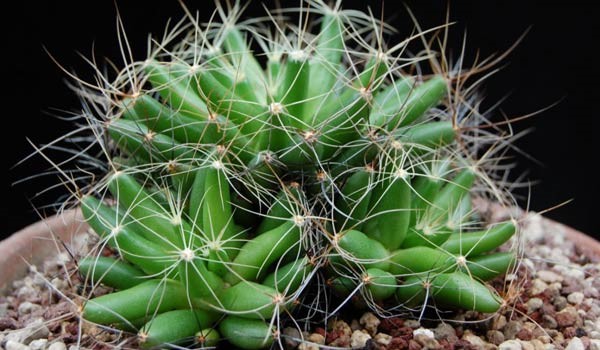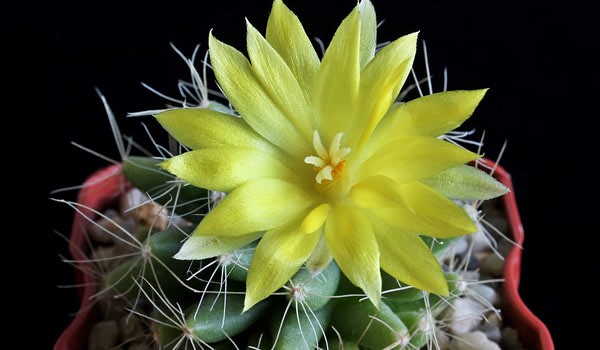Mammillaria Longimamma Guide + Grow & Care Tips

For those people who are interested in succulents, some cactuses are not the ideal house plants. Most of them are covered with spikes, do not produce flowers very often, or have a dull color. But, Mammillaria Longimamma is a plant that challenges all of these common beliefs and observations.
If you are looking for a truly unique cactus, Mammillaria Longimamma, or simply Finger Cactus, can offer everything you expect from a houseplant.
More about Mammillaria Longimamma
This cactus is actually a member of the vast Mammillaria genera with almost about 200. Some of the popular varieties include Mammillaria Bella, Celsiana, and Wrightii.
Home & Origin
Native to Mexico, the Finger Cactus mainly grows on volcanic soils or limestone. In their natural habitat, you can also find other types of cacti where they grow; this is because they share territory to protect themselves.
Common Names
Mammillaria Longimamma common names include the Finger Cactus, Nipple Cactus, Pineapple Cactus, as well as Finger Mound. But the first name is more common than the others. In its original name, Longimamma, which is a Latin word news long nipple, referring to its exotic roots or tubercles.
Shape & Dimension
When young this plant is solitary. As it ages, it starts to cluster up and grows up to 15 cm in width. Its stem its vibrant green stems can also grow up to 20 cm in height and 12 cm in diameter.
A normal Pineapple Cactus has an average of 20 branches. However, some of them have 30, and even up to 50 branches.
Mammillaria Longimamma Flower
Love the gorgeous aspects of this cactus is its flower. During the summer this plant blooms abundantly. Mammillaria Longimamma flowers can reach up to 6 cm in diameter, promising an eye-catching view with their bright yellow petals. These flowers will later become yellow-green fruit.
Spines
Looking at a Mammillaria Longimamma picture, you will see that it has radial as well as central spines (although it varies among different species). The central spine is usually 2.5 cm, with a number of white-yellow or brown radial ones.
Toxicity
Based on the reports, the Finger Cactus has no toxic effects. It does not have poisonous latex either. So if you have pets or children, you can grow this amazing cactus with no worries.

How to Grow the Finger Cactus
We all know that cactuses are low-maintenance plants. This is also true for the Nipple Cactus. However, the requirements of this plant are more similar to spineless succulents.
Now that does not mean that the Pineapple Cactus is a hard plant to grow, it means that it only means a little bit more of your love and attention. Here are what this unique plant needs to shine bright in your home:
Light
Remember when we said that Mammillaria Longimamma shares territory with other shrubs to protect itself? This means that they do not love direct sunlight very much.
So it is best to keep them indoors under filtered light, or in semi-shaded locations. You can even put them in complete shade, and they will grow happily.
Temperature
Having the light requirements in mind, the ideal temperature for the Finger Cactus is somewhere between 10 °C and average room temperatures.
Although it can tolerate temperatures as low as -5 °C for short periods of time, make sure that you bring your Mammillaria Longimamma In a warm room during the winter away from any cold drafts.
Water
When it comes to water, this is another succulent that does not need a lot of irrigation. So much that it pairs well with forgetful owners. Similar to other plants, let the soil dry out before each irrigation.
During its growing period, give it more attention and water it every week. And in cooler seasons, you can skip watering. Keep in mind that the Finger Cactus water needs also depend on its soil, the climate, and the humidity.
Pot & Soil
The Finger Mound cactus can grow very well in a rich and well-draining potting mix for cacti. Make sure that the pot has drainage holes. We also recommend you add a layer of pebbles or gravel under the soil to improve drainage.
Mammillaria Longimamma does not grow fast. So you do not need to worry about repotting it much. Every 2 to 4 years, transplant them to a “slightly” larger pot with fresh soil. After removing the Finger Cactus from its oil pot, remove the old soil from its long roots carefully, and then plant it.
- Tip #1: Do not water the cactus immediately, and wait for one or two weeks.
- Tip #2: You may also be interested in knowing that it is an excellent companion to Agaves, Opuntias, and many succulents.
Feeding
Providing rich soil can give your Nipple Cactus everything that it needs. However, it enjoys regular fertilizing during its growing period and when Mammillaria Longimamma flowers bloom.
From early spring to late fall, feed your adorable plant with diluted high-potassium fertilizer once every two weeks.
Pests & Diseases
In addition to everything that this lovely plant has to offer, it is also almost pest-free. However, spider mites can sometimes bother the Finger Cactus. For treating the infected parts, use a cotton pad dipped in rubbing alcohol.
Humidity
As evident by its natural habitat, Mammillaria Longimamma prefers dry environment. Humid places are not recommended for this plant. If the cactus spot is too humid, place a dehumidifier near its pot.

Mammillaria Longimamma Propagation
Propagating this beautiful succulent is a quick and easy process. This is how to propagate Mammillaria Longimamma from seeds:
- Buy the seed from a reputable seller, or collect them from the fruit.
- After planting them in suitable soil, cover the put using a plastic wrap to maintain humidity.
- Placed the pot in a warm, and semi-shaded spot. Keep an eye on the temperature, and water it regularly.
- After a few months, the Finger Cactus seeds will germinate. Now you can remove the plastic wrap.
- When the roots have developed, you can transplant the seedlings to their individual pots.
As you can see, Mammillaria Longimamma propagation is quite easy but requires time and patience. For a faster (and sometimes unsuccessful) result, you can use the offsets that grow around the main plant.
If you have a mature Finger Mound, here is what you need to do:
- From early spring to late summer, remove a cutting using a sharp and sterilized knife.
- Place the offsets on a paper towel in a shaded spot for a few days to callous.
- Then, fill a pot with fresh potting mix and plant it carefully.
- Keep the young cactus in a warm place and water regularly, so it can develop a strong root system.
Hopefully, you have found everything that you needed to know about the Nipple Cactus in this cactus. For a cactus enthusiast, this plant is a must-have. And if you are simply looking for a vibrant and tolerant companion for your room or office, we cannot recommend this succulent enough.
- In this post:
- More about Mammillaria Longimamma
- How to Grow the Finger Cactus
- Mammillaria Longimamma Propagation



